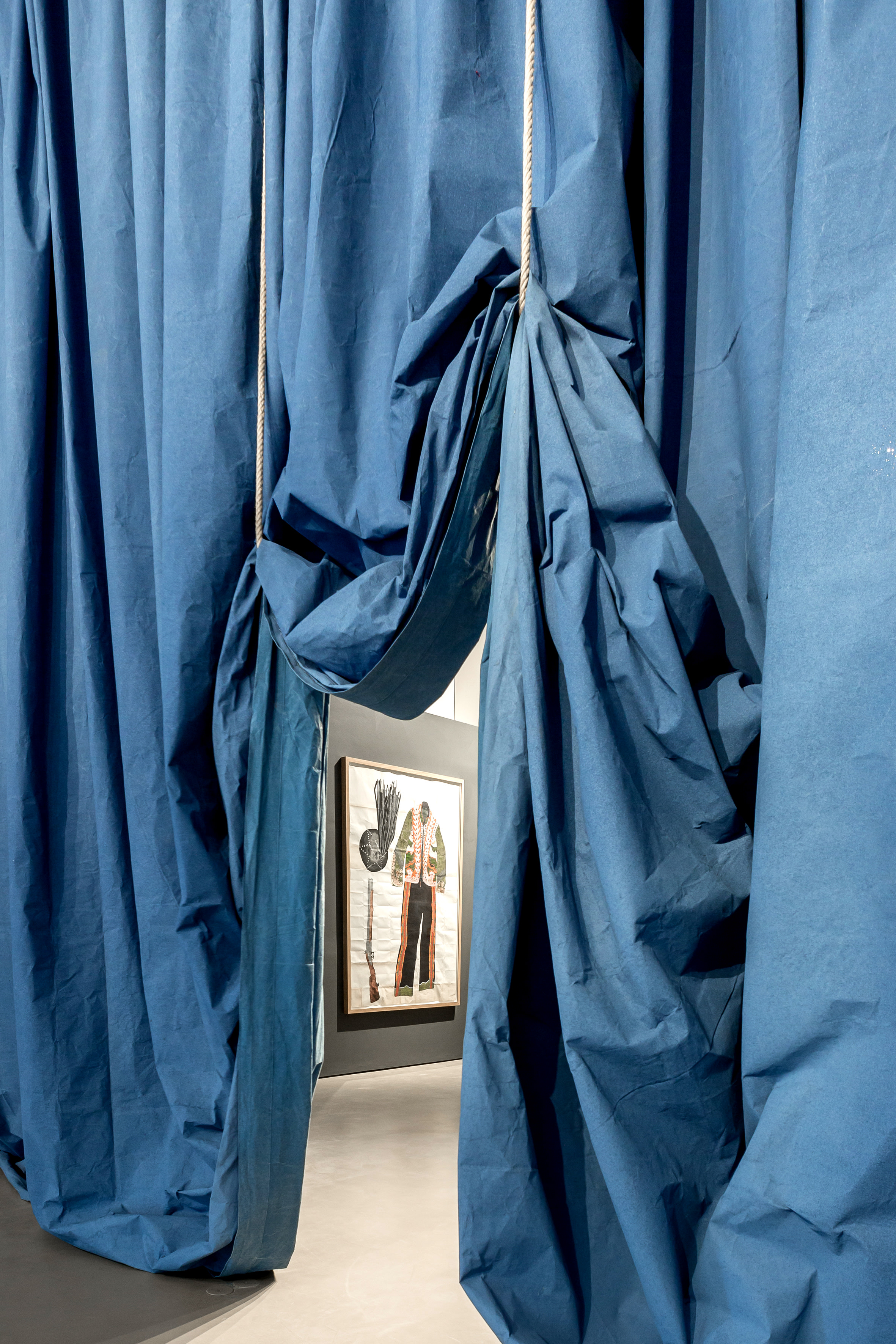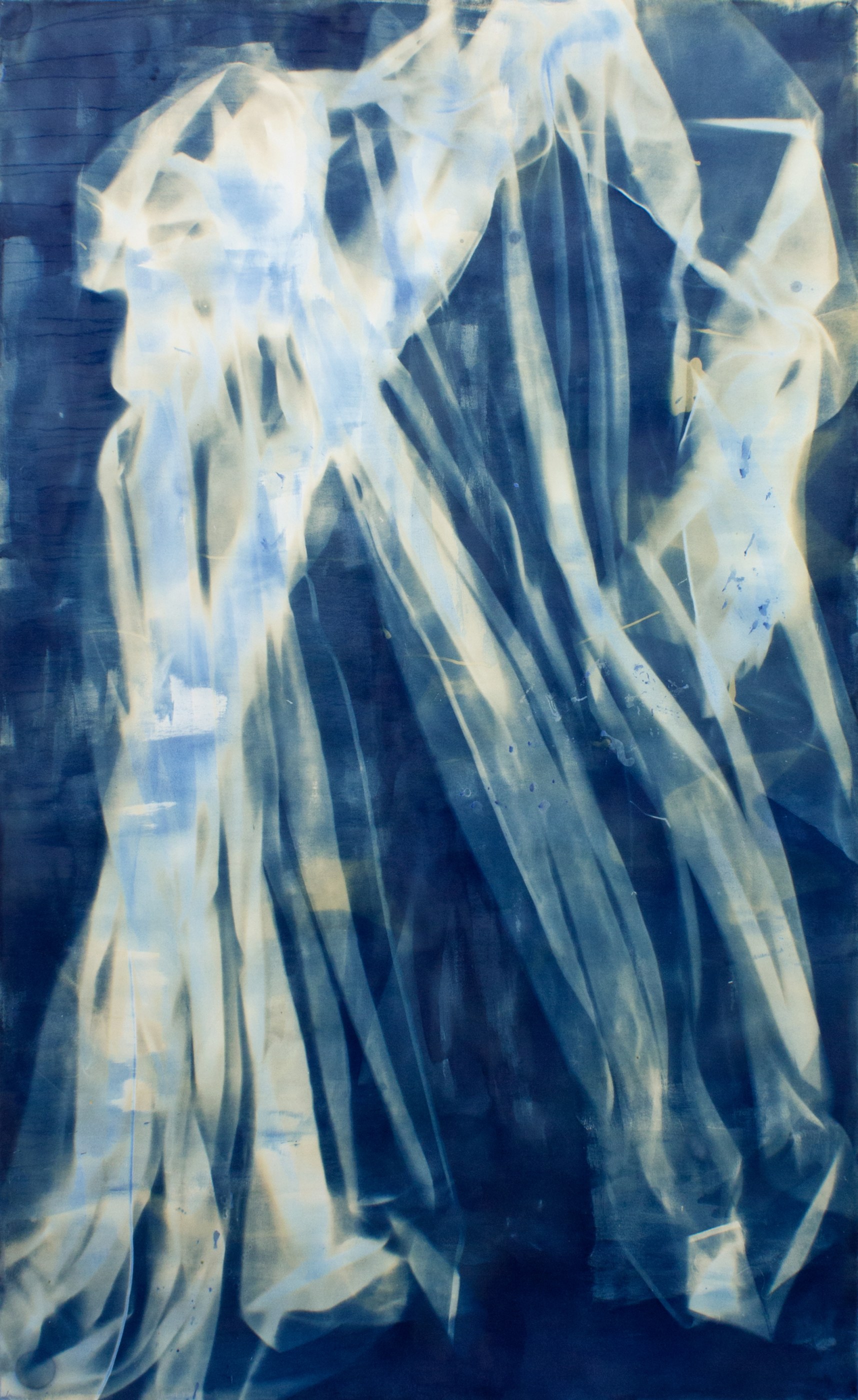Overview
The exhibition begins with the black-and-white images of Singspiel, a video produced in 2009, to reach, at the end of the path, the colour of It Has a Golden Sun and an Elderly Grey Moon(2016) projected inside the museum’s chapel, itself a small gem ofreligious architecture reserved for contemporary art installations. The nucleus of the exhibition is a blue grand drape, a barrier to be observed and traversed as though it were an abstract painting (Blue Curtain, 2015). Von Brandenburg’s intention is to create a narration in which the spectator is called to make his or her own, first-person assessment of the various cultural references of the works on exhibit in order to be able to respond to a question of great topicality: what values, forms or categories of ‘Modernism’ is it worthwhile to keep in mind, today, if we are to construct an identity that is participative and not merely imposed? The exhibition is conceived as a production in three acts during which the spectator finds himself asking just where the boundary between reality and its representation actually lies, and what, today, could be the ritual forms most useful for establishing channels for sharing between the local and ‘other’ dimensions.
Of a Golden Sun draws the spectator in, both physically and mentally, to force reflection on themes of enormous import such as the transmission of knowledge in global, technologically-advanced societies and the role of the individual subject in description of what could be defined as civil society in a post-ideological age of social networks. Singspiel (2009) is the video that welcomes the spectator to the first room of Museo Novecento, together with a grouping of stools and chairs that would suggest modernist formalism. The video, earlier presentedat the Venice Biennale, is a single long shot inside Villa Savoye on the outskirts of Paris; its images, entirely in black and white, are animated by a soft, sensual light. The camera follows a group of people who attempt to populate the spaces of the home built between 1928 and 1931 by La Corbusier, master of rationalist architecture. The notes of a German lieder fill the space and underline the strained relations between the individuals and the highly-charged architectural context, impregnated with history and ideology.
The second room hosts Blue Curtain (2015), a grand drape that impedes sight only in part. The curtain, similar to the act curtain that hides and reveals the scene on a theatre stage, becomes the threshold that both separates and unites the spaces of reality and of illusion. In this case it also evokes the limit between abstraction and figuration – and thus between the forms and categories of thought and art.
On one side is the above-mentioned painting by Felice Casorati, dated 1945; on the other, the collage entitled Kostüm des Banditen Gasparone created by Ulla von Brandenburg in Sardinia in 2013. Theatre and set design are another point of contact between the German artist and the Italian painter, who studied the classics and music, who was a protagonist on Turin’s cultural and industrial scene together with Casella, Persico and Gualino and who was profoundly inspired by European Symbolism and the Viennese Secession.A promoter, like other artists of the time, of a ‘total art’, Casorati worked extensively in design for the theatre; an example of this production are his sketches for sets for the operas The Vestal Virgin, Elektra, Norma and Dido and Aeneas staged by the Maggio Musicale Fiorentino between 1933 and 1960.
Curated by Lorenzo Bruni




